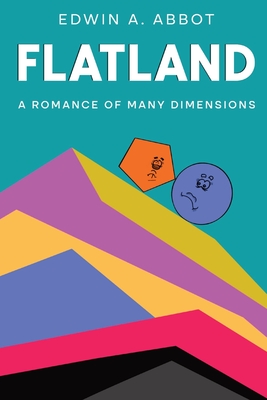Section 5: Of our Methods of Recognizing one another
bySection 5 explores the rigid structure that defines a woman’s place in Flatland—a society where mobility, both social and intellectual, is essentially impossible for them. Women are shaped as mere lines, and this geometric limitation marks them as inherently inferior in the eyes of the system. Unlike other shapes that can evolve into higher forms, women remain fixed, both in form and fate. There is no educational path, no social strategy, and no merit-based system that can change their status. As a result, women exist without the burden of hope or ambition. Interestingly, they are described as lacking memory and foresight, which removes emotional depth from their condition but also denies them any desire for something more. They are controlled not just by others, but by a mental design that leaves no room for change. This suppression of both thought and form creates a society where half the population is effectively silenced.
The complexities of recognition in Flatland reveal how geometry replaces identity in a world with no height or depth. All individuals appear as straight lines from the front, making it difficult to distinguish one figure from another without specialized methods. Hearing is one method, particularly useful among the lower classes where voice tones vary more noticeably. For Triangles and Squares, subtle differences in pitch help identify who is speaking. However, as social rank increases and shapes become more regular, voice alone becomes less reliable. Among higher Polygons, vocal tones are too similar to detect differences, creating confusion. In those cases, touch becomes the next tool for recognition. Individuals gently feel one another’s angles to determine the number of sides and thus the person’s rank or identity. This practice is taught from childhood and becomes a vital skill in daily life.
Despite its necessity, touch-based recognition is not without danger. The sharper the figure, the higher the risk of injury if one is careless during the process. Isosceles Triangles, in particular, are known for their acute points, which can cause severe harm with even minor miscalculations. The narrator recalls an incident from his family history when a relative, while attempting to identify someone by touch, moved too quickly and was fatally wounded. That single misjudgment halted their social advancement for generations. In Flatland, such accidents do not only carry physical consequences but social ones too. Safety protocols and disciplined technique are critical in these interactions, especially during formal gatherings or state functions. Recognition is not just about identity—it is also about hierarchy, trust, and maintaining social order.
As figures increase in sides—moving from Hexagons to Decagons and beyond—the distinctions become subtler and harder to detect by feel alone. Even the most skilled citizens may struggle to differentiate a twelve-sided figure from one with fourteen sides. This makes accuracy a sign of education and refinement, while errors reflect poorly on one’s intellect and breeding. Over time, Flatlanders develop a sensitivity to angles that borders on instinct. They may not see the sides directly, but the pressure points felt during touch allow them to approximate the shape. This tactile literacy becomes an unspoken language of class. To touch accurately is to navigate society successfully. The further one climbs the social ladder, the more complex the geometry—and the more delicate the recognition.
What makes Flatland so unique is how it substitutes physical dimensions for social ones. Identity is not about personality, voice, or behavior—it is about mathematical form. Because visual cues are nearly useless, relationships depend on alternative senses honed over a lifetime. This unusual system teaches patience, precision, and restraint, but also enforces limitations. A person’s future can be halted by a small accident or a single misjudgment of angle. Women, without angles at all, remain trapped in both form and function. Meanwhile, those who evolve with more sides gain not just prestige, but protection from misidentification. The closer one approaches circularity, the more invisible they become to risk, but also to emotion. Through this lens, Flatland presents a world that is mathematically clean but emotionally cold—a place where identity is measured in degrees, and deviation is unforgivable.


